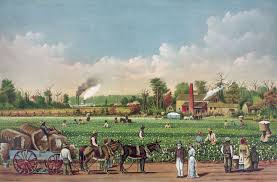Stamp: Valle de los Ingenios, Trinidad, Cuba (UNO Geneva 2019)
Valle de los Ingenios, Trinidad, Cuba (UNO Geneva 2019)
24 October (UNO Geneva ) within release World Heritage Sites - Cuba (2019) goes into circulation Stamp Valle de los Ingenios, Trinidad, Cuba face value 1 Swiss franc
| Stamp Valle de los Ingenios, Trinidad, Cuba in catalogues | |
|---|---|
| Colnect codes: | Col: NT-GE 2019-12A |
Stamp is horizontal format.
Also in the issue World Heritage Sites - Cuba (2019):
- Stamp - Valle de los Ingenios, Trinidad, Cuba face value 1;
- Stamp - Palacio de Valle, Cienfuegos face value 1.50;
- Stamp - Morro Castle, Havana face value 0.30;
- Booklet - World Heritage Sites - Cuba face value 11;
- Stamp - Viñales Valley, Cuba face value 0.50;
- Stamp - Camagüey, Cuba face value 0.30;
- Stamp - Castillo de San Pedro de la Roca, Santiago de Cuba face value 0.50;
- Stamp - Valle de los Ingenios, Trinidad, Cuba face value 0.30;
- Stamp - Palacio de Valle, Cienfuegos face value 0.50;
Stamp Valle de los Ingenios, Trinidad, Cuba it reflects the thematic directions:
A landscape is the visible features of an area of land, its landforms and how they integrate with natural or man-made features. A landscape includes the physical elements of geophysically defined landforms such as (ice-capped) mountains, hills, water bodies such as rivers, lakes, ponds and the sea, living elements of land cover including indigenous vegetation, human elements including different forms of land use, buildings and structures, and transitory elements such as lighting and weather conditions. Combining both their physical origins and the cultural overlay of human presence, often created over millennia, landscapes reflect a living synthesis of people and place that is vital to local and national identity. The character of a landscape helps define the self-image of the people who inhabit it and a sense of place that differentiates one region from other regions. It is the dynamic backdrop to people’s lives. Landscape can be as varied as farmland, a landscape park, or wilderness. The earth has a vast range of landscapes, including the icy landscapes of polar regions, mountainous landscapes, vast arid desert landscapes, islands and coastal landscapes, densely forested or wooded landscapes including past boreal forests and tropical rainforests, and agricultural landscapes of temperate and tropical regions.
Plantations are farms specializing in cash crops, usually mainly planting a single crop, with perhaps ancillary areas for vegetables for eating and so on. Plantations, centered on a plantation house, grow crops including cotton, cannabis, coffee, tea, cocoa, sugar cane, opium, sisal, oil seeds, oil palms, fruits, rubber trees and forest trees. Protectionist policies and natural comparative advantage have sometimes contributed to determining where plantations are located.
The United Nations Educational, Scientific and Cultural Organization (UNESCO; pronounced /juːˈnɛskoʊ/) is a specialized agency of the United Nations (UN) with the aim of promoting world peace and security through international cooperation in education, arts, sciences and culture. It has 194 member states and 12 associate members,as well as partners in the non-governmental, intergovernmental and private sector. Headquartered in Paris, France, UNESCO has 53 regional field offices and 199 national commissions



